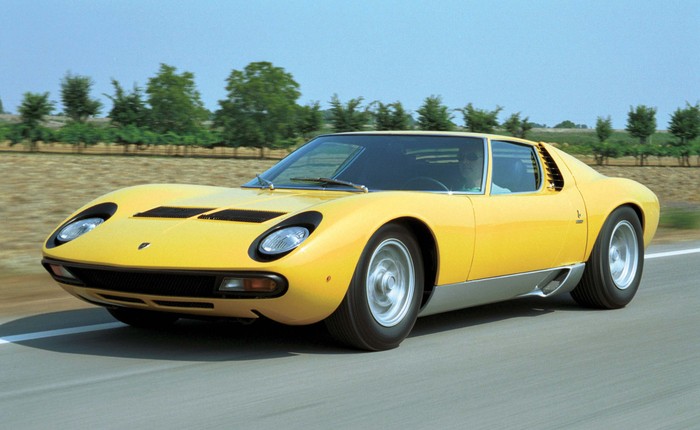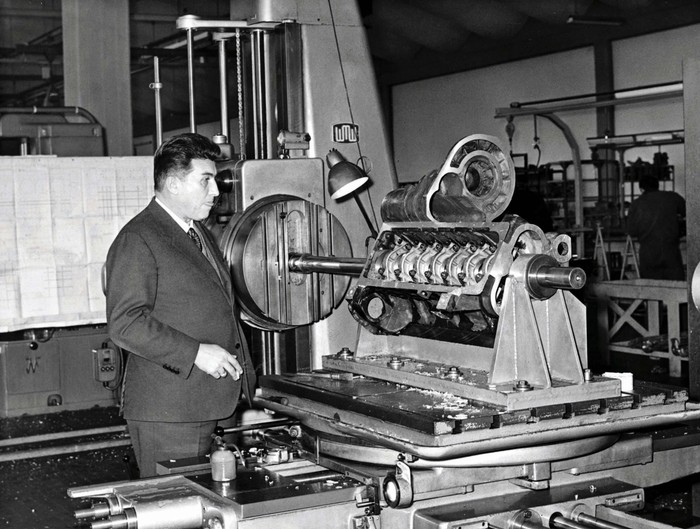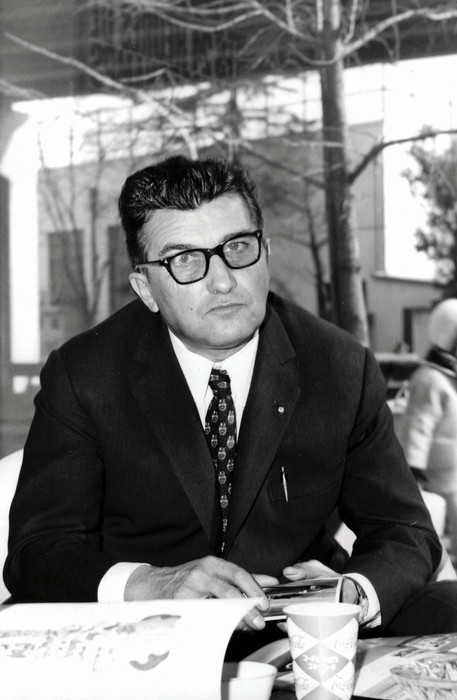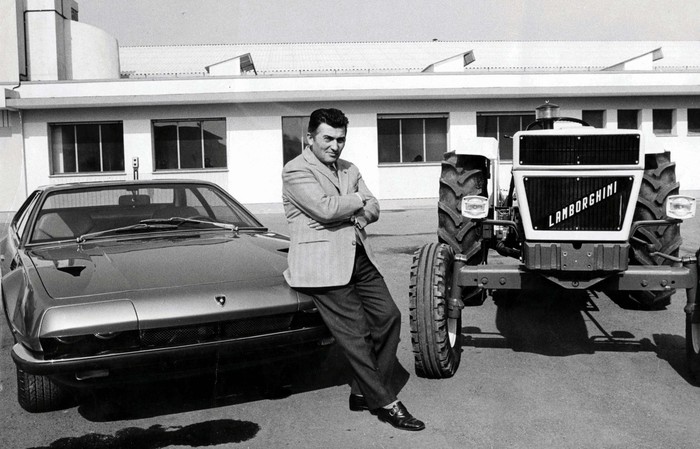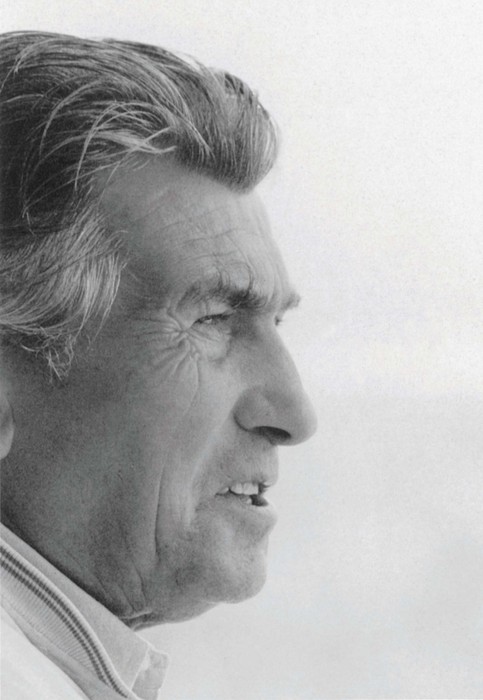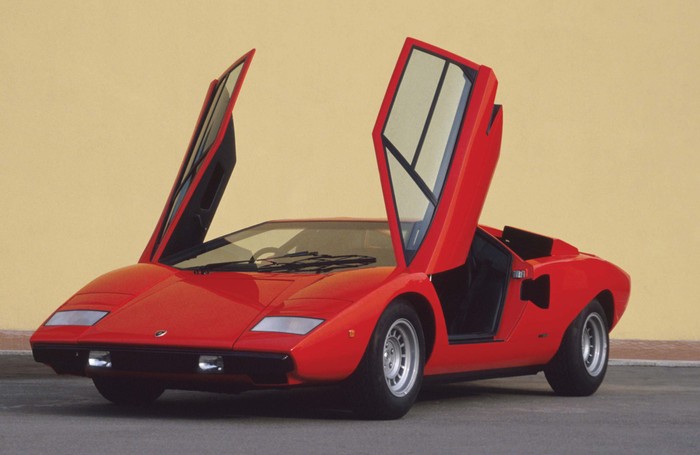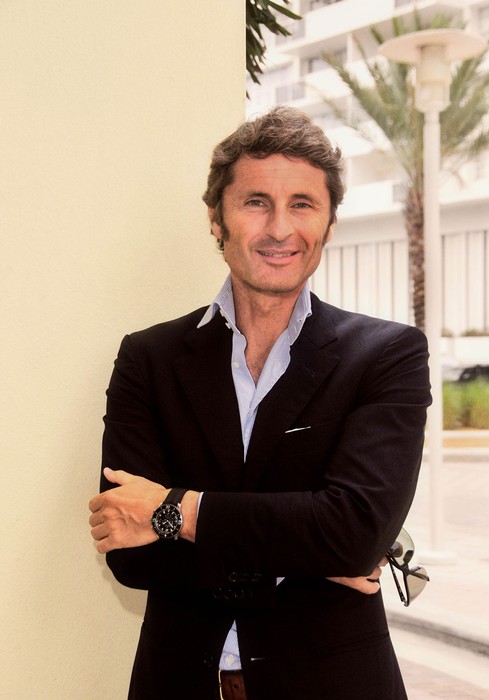

Interview: Lamborghini President and CEO Stephan Winkelmann
Just prior to leaving for Frankfurt for the Frankfurt Motor Show, Leftlane had an opportunity to discuss the auto industry in general, and Lamborghini in particular, with company President and CEO Stephan Winkelmann in Miami.
Despite his German ancestry, Winkelmann has spent virtually all his life in Italy. The son of German parents, he was born in Berlin, but moved with his family to Rome when he was a baby. Growing up in Italy eventually led him to his formal schooling where he studied political science. After graduating, he spent two years as a paratrooper, jumping out of perfectly good airplanes, as a Lieutenant in the German Army.
Professionally, his career started in the financial field, but after a year he landed at Mercedes-Benz. The automotive bug bit, and he then went to Fiat Auto, where he remained for 11 years, rising to the position of CEO of Fiat Auto-Germany. There he was responsible for the Fiat, Alfa-Romeo, and Lancia brands, but his experience piqued Lamborghini's interest.
Winkelmann has been President and CEO of Automobili Lamborghini since 2005.
What was your first driving experience?
Stephan Winkelmann: Growing up in Italy, we all had motorbikes. I broke my leg on one, but it was the only thing we could do, because in Italy, you can't get your license until you are eighteen. I learned to drive at 15 with the Fiat Cinquecento (Fiat 500) of my mother. When you were downshifting you had to do some fierce heel and toe, because they were not synchronized!
You have said the company has been hit more than the average car company these days. How so?
SW: If we are speaking globally its an average the automobile industry is minus 10, minus 20 (percent) depending on the brand and circumstances, and the life cycle of their products. It's different with the luxury brands. It [a luxury car] is something that you buy to reward yourself. Most of the people in that market have lost a lot of money in the last eighteen months; it's a moment to keep some distance from these [luxury] things. But we all know business is coming back, because after a long time of let's say "not rewarding yourself," you want to have something again, and therefore we are mainly focusing on two main issues: Number one is to remain profitable, because this is what we owe to our employees and the company for the future, and two, not reducing the investments for the future products. This is very basic, because if you want to stay emotional, if you want to continue to build, even in the future, cars which are uncompromising, extreme, and Italian, then you have to go on like this.
I think we have hit the bottom, but I think the recovery will be a slow recovery. I don't think we will see a jump just yet. We have markets, which are better than last year, and are growing. The Chinese market for example. But if we are speaking on a worldwide level, it's not enough because, by far, the U.S. is the biggest one, even though they were hit in the worst way.
Tell us about your biggest markets.
SW: The biggest market is the U.S., and then Italy, Germany, the U.K., Middle East, and China are the major markets. Italy is stable, China is picking up.
What about Russia?
SW: Russia is a small market for two reasons: It's more a sedan market due to the infrastructure - the condition of the roads in general, and then the seasonality. We have a very short seasonality there even though we have a four-wheel-drive, but even in the hard winter, it's too hard to drive those types of cars, and many of our Russian customers are in the U.K. and the south of France.
So they're not confined to Russia. They go everywhere else.
SW: Exactly. They help to comprise some of the UK market. In fact, the British citizens are very keen on sportscars and even supersportscars. Aston-Martin and other brands are typical British brands, and in my opinion there are only two countries from the very beginning that were building sportscars and supersportscars, and these were the UK and Italy. Italy is left over because we still have the brands, but the UK is doing quite a good job. Aston-Martin, they are more GT cars than supersportscars, but for supersportscars, the country is Italy.
How about electric or power-assisted cars?
SW: What we have said is we are going to reduce the emissions by the middle of the next decade. Because we strongly believe this is important even for a brand like ours. Even though the emissions in terms of CO2 are negligible, since 1963, we have built just a little more than 20,000 cars in 45 years. Of those, about half are still running, and many are not being driven that much. When they come into the workshops, the average mileage is below 5,000 miles a year, so we are not a brand which has a major impact in terms of CO2 emissions.
This means that although we are not adding much to emissions on a worldwide basis, we believe that we have a social responsibility like everybody else, and so we have defined targets to reduce emissions in the next decade by 35 percent. This will be done by technologies, which are in place, while still maintaining the DNA of the brand.
You can do everything you possibly can, but then you don't have the car anymore and you might be driving something that is not a Lamborghini. This is the effect, and we take it very seriously.
In fact, back in Sant'Agata, in our plant, we are building a photovoltaic system and are going to reduce operational emissions [lighting, heating, air conditioning]. In my opinion, everybody should do what they are able to do, and we will see in the future if technology is proceeding faster than we assume right now, then we will revise our projections and see if we can do even more. For the time being, this is our goal, and we want to be very strict on this. The first step, we've already made, by introduction of the new Gallardo coupe, the LP560, last year, where we already reduced emissions by 18 percent. It's a big step in the right direction.
Are you still intent on introducing one new product per year?
SW: This is the idea because being a two-model driven company, we want to have a new product every year. This is the promise we are giving to our customers that we will have at least one new product every year.
Do you have more collectors as your customers or actual drivers?
SW: Well, it has changed a lot. Ten years back we had more collectors, but now, for sure we have more drivers. The usability of the cars is tremendous, and there is no problem using the car on a daily basis if you want to.
Let's talk about new products: You have just introduced the new Reventon. What is the price point?
SW: It's 1.1-million Euros, plus taxes! That's $1.6-million USD. And we are going to announce 15 units. It's a silver car with a little touch of beige in it. It is a matte finish, fully loaded, no options. It is like the coupe, but we did a lot on the engine bonnet, it's very different, the colors of the interior are different, so its color and trim, for sure, are a sexier color. It's a piece of art.
It looks like the F-22 fighter jet.
SW: Yes the F-22 Raptor was the idea, the inspiration for the designers to work from.
We were really impressed by the Estoque that you introduced last year.
SW: Well, as I mentioned in Paris last year, it was not intended to be produced, but to show what could be the direction if Automobili Lamborghini decided to build a third model. This would be the opportunity to double the size of the company on one hand, and on the other hand it would be something, which in our opinion would be credible for a brand like ours. We wanted to test the audience with this concept car, but it wasn't meant to be built.
What about Porsche's just-introduced Panamera. Would the Estoque have competed with it?
SW: At the time, I said it would be a car which would be positioned on the level of the Gallardo in terms of pricing, 150,000 Euro (about $219,000) so it would not have affected the range of the Panamera. We will still set it to the very high end of the four door sedans.
Other outlets have said Lamborghini's V12 has gone about as far as it can go. Has it?
SW: Well, Murcielago is a car that's having a great success, still, and even the engine has opportunities in my opinion that are unexploited. But we never speak about the future, but the V12 is a performing engine"¦if you drive the Super Veloce, which is the most extreme Lamborghini ever built (670 horsepower), it's the actual engine. Honestly, I believe that if you want to reduce the super sports car business to its bare essence, it's about design and performance. But we strongly believe the power to weight ratio is coming into the picture more and more. And if I had the choice, to increase the power, or to reduce the weight of the same car, it's 100 percent sure that you have more driving experience with the lighter car, than with a car which has more power and more weight. With the Super Veloce, we did both: we increased the power and reduced the weight. The result is impressive, it's really impressive. A monster like this is very drivable and the result is unbelievable.
The Viscous coupling system remains?
SW: Yes. This is a very typical Lamborghini 4x4 system, which we have had in place from the mid-'90s.
Is anything derived from Audi's quattro?
SW: No, no, this is what most people think, but it was designed by Lamborghini before Audi bought the company.
Tell us about your display at the Frankfurt Motor Show.
We [have here] at the Frankfurt show, the Reventon roadster, the Super Veloce, the Spyder, and the Balboni [2WD] model.
Speaking of the lineup, let's talk about the Balboni model. A tribute to your factory test-driver. That must have been a great career.
SW: Yes, the Gallardo LP 550-2 Valentino Balboni. And Valentino is still active! He is the one who has test driven all the cars, starting from Countach, or even the last Miuras, and was the one who got his "okay" by Ferruccio Lamborghini himself, so he is not only a bridge, but he also represents the continuity, and he is something that is unique: He is the test-driver-a figure in the company who is the most visible of these guys. He's the one who gets to put on the driver's suit. [Laughs]
About the Reventon: Same performance as the coupe, or faster because it's a little lighter?
SW: It's more or less like the coupe. The point is here we have 670 horsepower, a 6.5-liter V12, 0-62 mph in 3.4 seconds, and a maximum speed of 205 mph. That's enough. [grins]
What is the daily plan when you get to the office?
SW: It's broken down into four topics: New things, problems, products and the numbers.
These times are geared toward constant revisions of what we have planned. It is one of the biggest issues we face because there is no certainty and there is no easy planning for the future.
Photos by Mark Elias.
